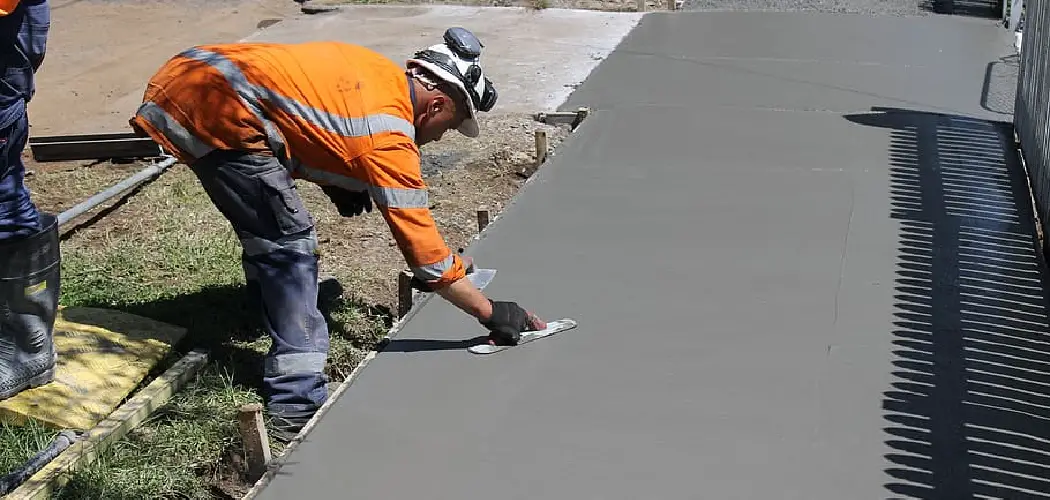A sloping concrete floor can be a real eyesore and, in some cases, even a safety hazard. At first glance, it may seem like an overwhelming problem that requires professional help.
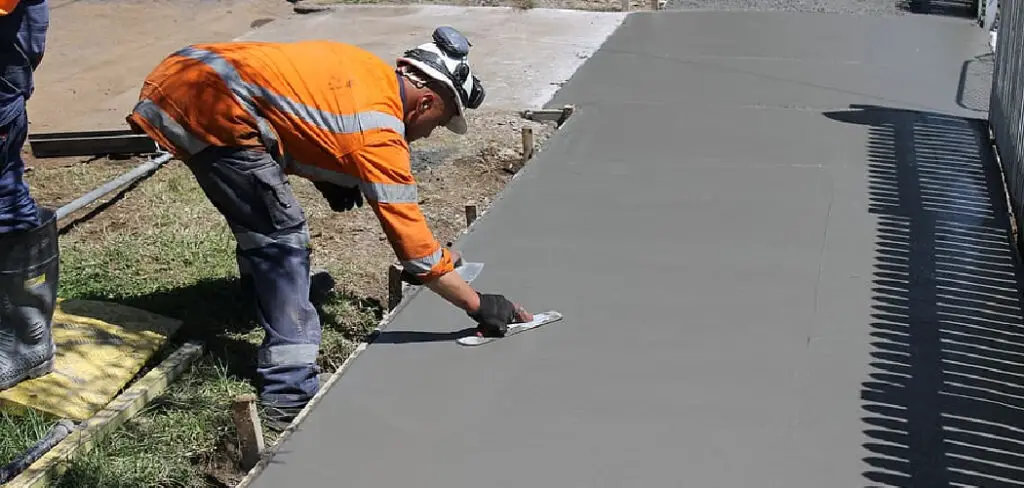
However, with a little guidance, time, and effort, you can level your concrete floor yourself. In this blog post, we’ll walk you through the steps of how to level a concrete floor that slopes.
Can You Level a Concrete Floor that Slopes?
If you have ever tried to place furniture in a room with a sloped concrete floor, you understand the difficulty and frustration that comes with it. Not only does it look uneven, but it can also be a tripping hazard. The good news is, yes, you can level a concrete floor that slopes.
However, assessing the slope’s severity and the concrete’s quality is important before attempting to level it. Depending on the situation, you may need to consult with a professional to ensure a level and safe floor. Don’t let a sloped floor hold you back from designing the space of your dreams!
Why Should You Level a Concrete Floor that Slopes?
Having an uneven concrete floor can be a headache for homeowners. Not only does it pose a safety hazard, but it can also make it difficult to install tile, hardwood, or other flooring options. A sloping concrete floor may seem like a minor issue, but it can quickly become a major problem if left unattended.
The truth is that leveling a concrete floor can help ensure that your home remains safe and stylish. Not only will it improve the overall appearance of your space, but it will also provide a stable and level surface for all your flooring needs. So if you’re tired of tripping over uneven floors or want to increase your home’s value, leveling your concrete floor is the way to go.
7 Steps to Follow on How to Level a Concrete Floor that Slopes
Step 1. Assess the Situation
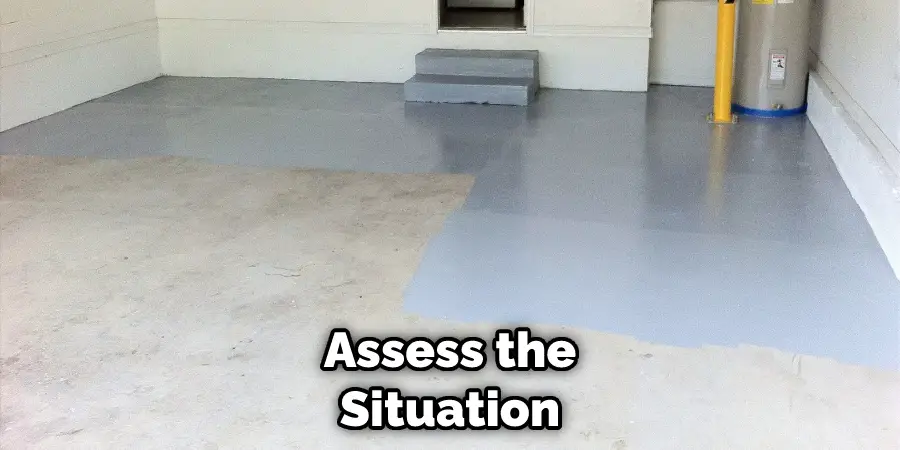
The first step to take when you want to level a sloping concrete floor is to assess the situation. Determine the extent of the slope and identify any cracks, holes, or rough spots that may require repair before leveling. You may also want to measure the slope to determine the degree of the slope.
Step 2. Prepare the Surface
Before you start leveling the floor, you must prepare the surface. Remove any debris or loose material from the concrete floor, and make sure it is clean and dry. If there are any deep cracks, fill them with concrete filler and let them dry completely. You may also want to apply a primer to the surface to ensure good adhesion of the leveling compound.
Step 3. Mix and Apply the Leveling Compound
Now it’s time to mix and apply the leveling compound. Start by reading the manufacturer’s recommendations on the material you’ve chosen. Typically, you’ll mix the compound with water in a bucket until it forms a smooth and even consistency. Once that’s done, pour it into the lowest part of the floor and spread it evenly with a trowel. Be sure to work quickly, as the compound will start to harden in a matter of minutes.
Step 4. Smooth Out The Surface
After you’ve applied the leveling compound, it’s time to smooth out the surface. Use a straightedge or a level to ensure that the entire surface is level. Withdraw any excess leveling compound, and fill in any low spots where required. Allow the compound to dry and cure according to the manufacturer’s instructions. Depending on the compound used, this may take a few hours to a day or longer.
Step 5. Finish the Surface
Finishing the surface is the next step in leveling a sloping concrete floor. You can either leave it as is or apply a thin layer of primer or paint to match the rest of the floor. Now you have succeeded in leveling your concrete floor that slopes.
Step 6. Preventive Maintenance
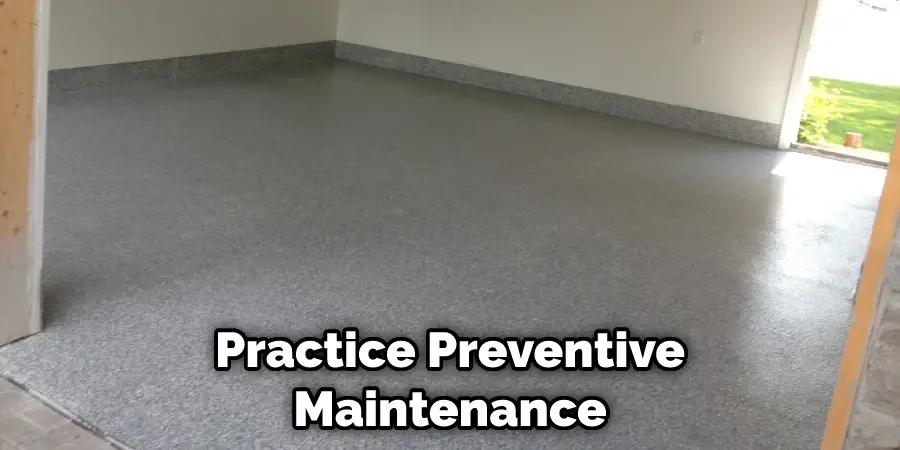
To ensure your newly leveled floor lasts longer, it is important to practice preventive maintenance. This means regularly inspecting for any signs of wear or damage and performing repairs as needed. You should also try to maintain the proper moisture levels in the concrete by sealing it periodically.
Step 7. Hire a Professional
If you’re having difficulty leveling a concrete floor that slopes, it may be best to seek the help of a professional. A licensed contractor can diagnose any underlying issues and provide expert advice on how to level the floor properly.
They will also have access to specialized tools and materials that make the job easier. Hiring an experienced contractor is a surefire way to get the job done right the first time.
That’s it! You’ve now learned the seven steps on how to level a concrete floor that slopes. You can easily achieve professional-looking results with proper preparation, the right tools, and a bit of hard work. Good luck!
5 Considerations Things When You Need to Level a Concrete Floor that Slopes
- The first thing you need to do when leveling a concrete floor is to determine the cause of the problem. There are a number of reasons why a floor might be uneven, including settling, poor drainage, and inadequate support. Once you know the cause of the problem, you can develop a plan to fix it.
- The next step is to determine how much the floor needs to be leveled. This will help you decide whether you need to do a complete leveling or just a partial leveling. It will also help you determine the best method for leveling the floor.
- Once you have determined how much the floor needs to be leveled, you need to choose the right material for the job. Several materials can be used to level a floor, including self-leveling concrete, mud jacking, and polyurethane foam. Each material has its own advantages and disadvantages, so you need to choose the one that will work best for your particular situation.
- The fourth step is to prepare the area for leveling. This includes removing any furniture or other items from the area and ensuring the surface is clean and debris-free.
- The final step is actually to level the floor. This can be done using a variety of methods, depending on the material you have chosen and the severity of the problem. Once the floor is level, you can replace any furniture or other items removed from the area. Make sure to use the appropriate sealants or coatings once the job is finished to make sure that your floor stays level and in good condition for many years to come.
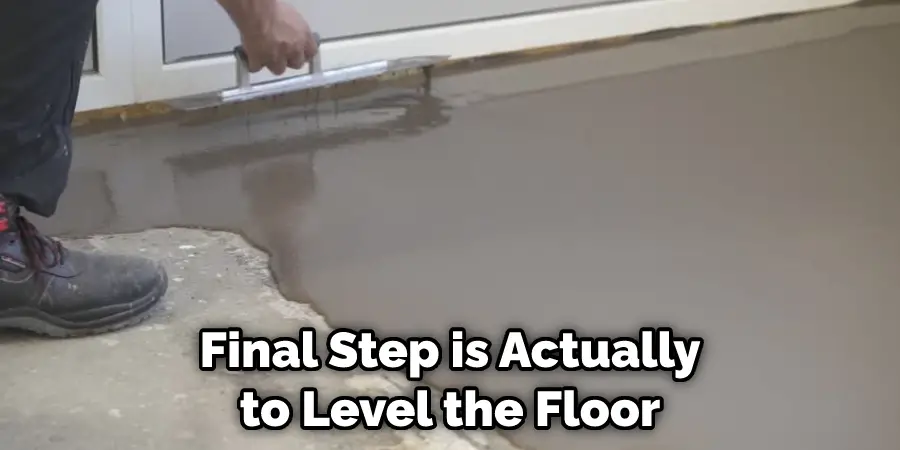
Following these five steps, you can successfully level a concrete floor that slopes easily. With proper preparation, the right materials, and reliable techniques, you can create an even and safe floor that looks great for years to come. So don’t let a sloping concrete floor bring down your project – get it leveled today!
Benefits of Level a Concrete Floor that Slopes
Leveling a concrete floor that slopes can provide numerous benefits for homeowners and businesses alike. Firstly, it can increase safety by preventing tripping and uneven walking surfaces. This is especially important for businesses where liability concerns can be a major issue.
Additionally, leveling a sloped concrete floor can help prevent water damage by encouraging proper drainage. This is especially helpful in areas prone to heavy rain or flooding. Finally, a level concrete floor can help improve the overall aesthetic of a space, making it look cleaner and more professional. Whether you’re a homeowner or a business owner, investing in leveling a sloping concrete floor can provide a great return on investment.
Some Common Mistakes People Make When Trying to Level a Concrete Floor that Slopes
Leveling a concrete floor can be challenging, especially if the floor slopes. Despite the difficulty, many people attempt this process themselves, and unfortunately, some common mistakes are made.
One common mistake is failing to use the correct thickness of the self-leveling compound, which can result in an uneven surface. Another mistake is not allowing enough time for the compound to dry, which can lead to cracking or bubbling.
It’s also essential to properly assess the slope of the floor before beginning, otherwise, uneven areas may not be corrected. By educating yourself on these common mistakes, you can avoid them and ensure that your concrete floor is leveled correctly.
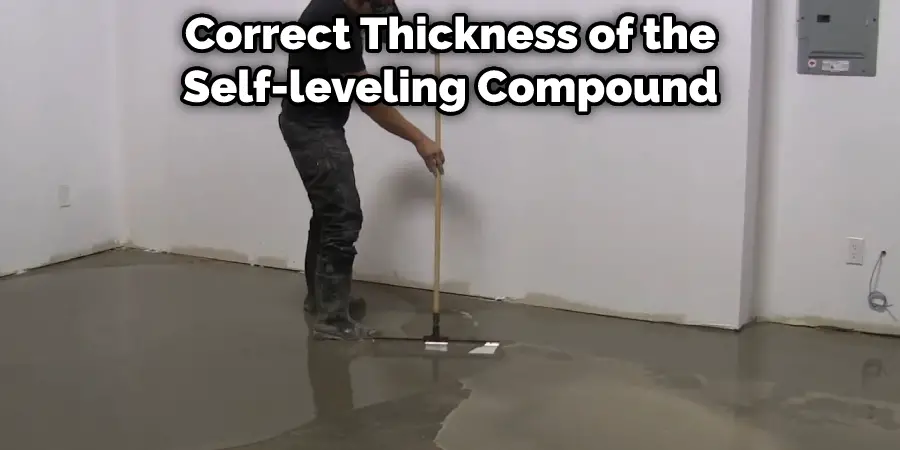
Conclusion
Leveling a sloping concrete floor isn’t rocket science; with the right tools and materials, you can do the job yourself. The key is to take your time and follow the steps carefully. Proper preparation and application of the leveling compound can result in a smooth and even surface.
Be sure to follow the manufacturer’s guidelines and recommendations concerning mixing, curing, and finishing. With a bit of patience and effort, your sloping concrete floor will soon be leveled and ready for use. Thanks for reading our post about how to level a concrete floor that slopes.

